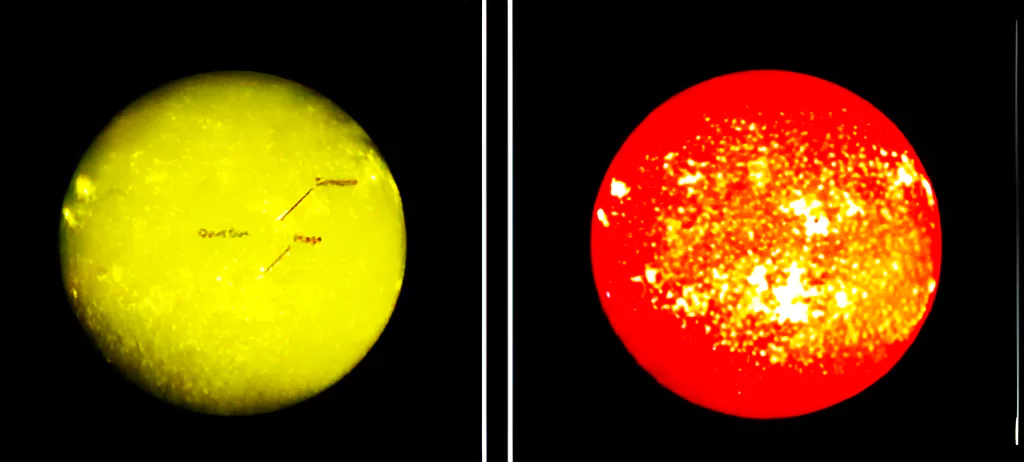Context: The Solar Ultraviolet Imaging Telescope (SUIT) instrument on board the Aditya-L1 spacecraft has successfully captured the first full-disk images of Sun in the 200-400 nm wavelength range.
SUIT Unveils Sun’s Secrets: Capturing Sun’s Photosphere and Chromosphere
- SUIT captured images of the Sun’s photosphere and chromosphere in this wavelength range using various scientific filters. Among the notable features revealed are sunspots, plage, and quiet Sun regions, providing scientists with pioneering insights into the intricate details of the Sun’s photosphere and chromosphere.

About Aditya-L1 Mission
- Aditya-L1 Mission is the first Indian space mission to observe the Sun and the solar corona.
- The meaning of Aditya is “Sun God”.
- It was placed in a halo orbit around the first Lagrange point (L1) of the Sun-Earth system which allows it to look at the Sun continuously.
- PSLV-C57: It is the 25th mission using PSLV-XL configuration.
- Objectives of Mission:
- Solar upper atmospheric (chromosphere and corona) dynamics.
- Chromospheric and coronal heating.
- Physics of the partially ionized plasma.
- Initiation of the Coronal Mass Ejections (CME).
- Solar Flares.
|
About Solar Ultraviolet Imaging Telescope (SUIT)
- Developed by: Pune’s Inter-University Center for Astronomy and Astrophysics
- Objective: To study the Sun’s ultraviolet (UV) emissions and capture high-resolution images of the Sun’s atmosphere, known as the corona, in various UV wavelengths.
- It will operate in the far and near ultraviolet regions, covering wavelengths of 200-400 nanometers.
Significance: SUIT observations will help scientists study the dynamic coupling of the magnetized solar atmosphere and assist them in placing tight constraints on the effects of solar radiation on Earth’s climate.
News Source: Business Standard
![]() 9 Dec 2023
9 Dec 2023

